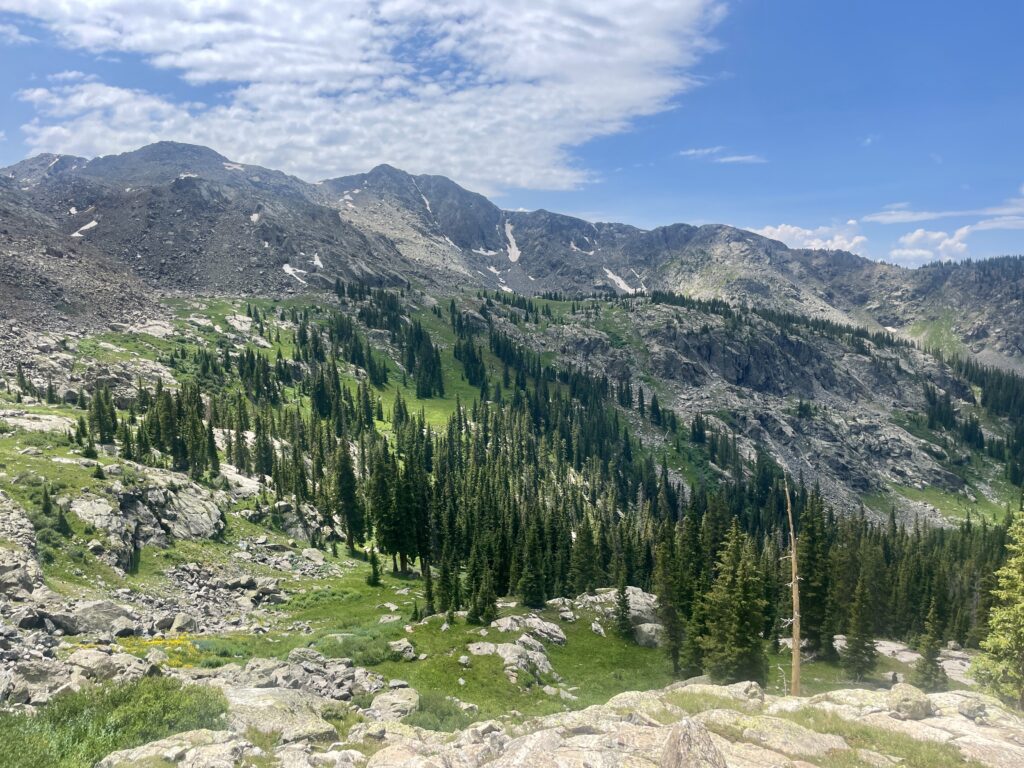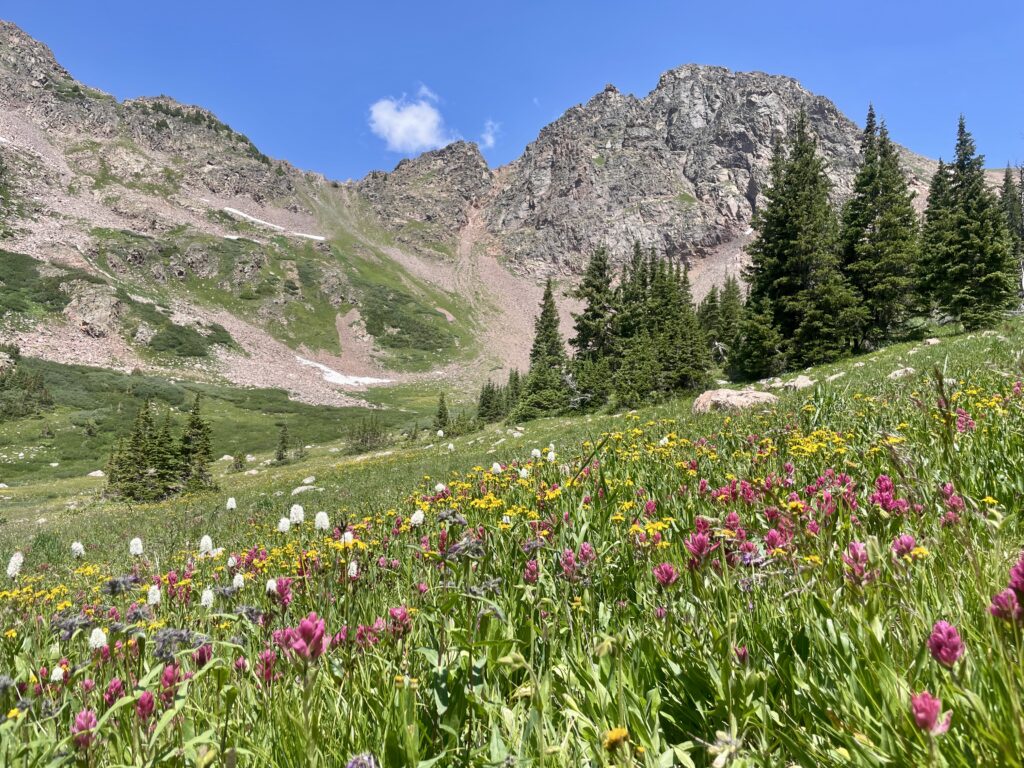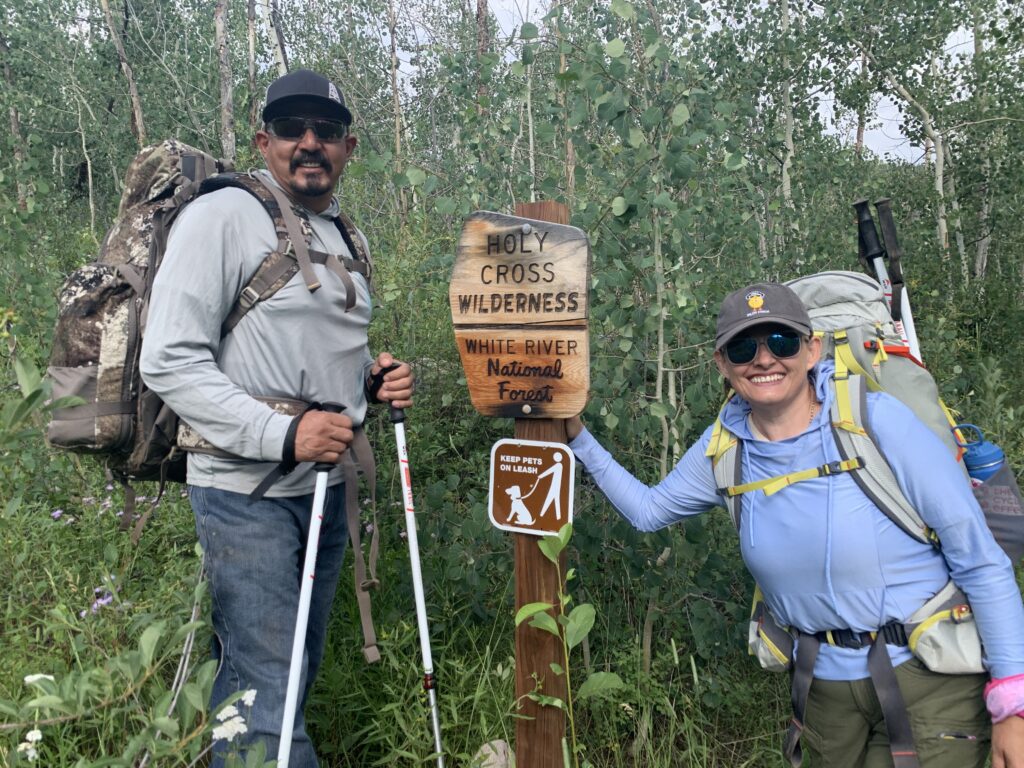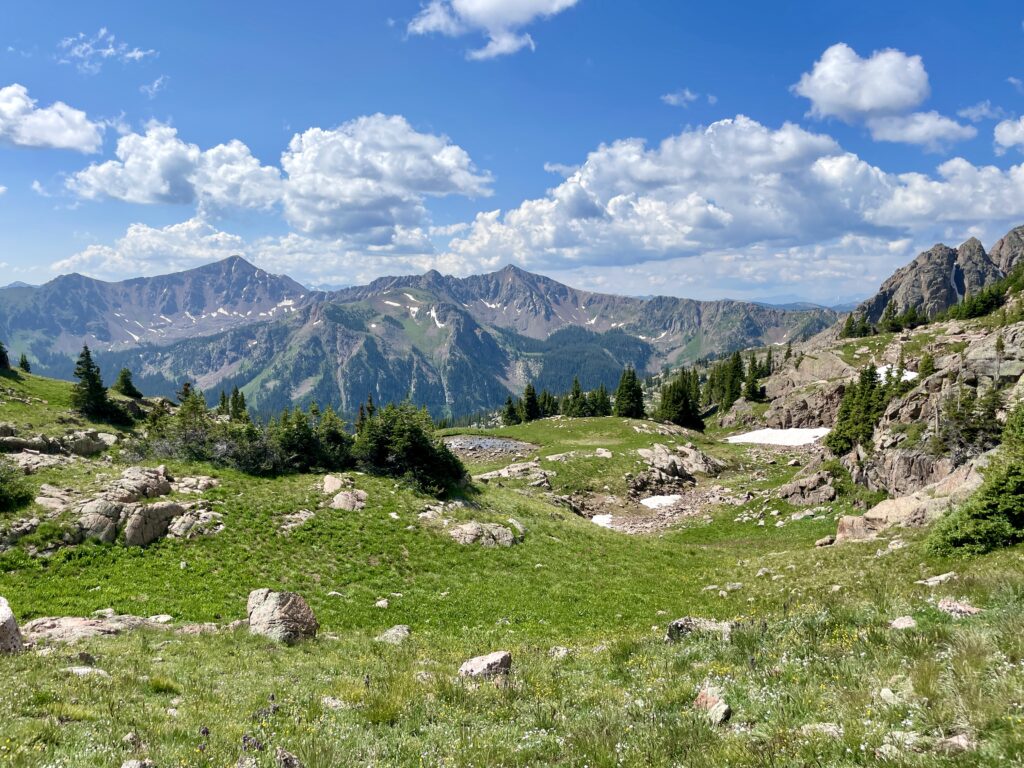September 3rd marks the 60th anniversary of the Wilderness Act. President Lyndon B. Johnson signed it into law in 1964. In Eagle County, we are fortunate to have three designated Wilderness areas in Eagles Nest Wilderness, Holy Cross Wilderness, and the Flat Tops Wilderness. These three areas were designated Wilderness areas in 1976, 1980, and 1975 respectively, totaling over 488,000 acres.
Wilderness areas protect the natural beauty and stunning landscapes we enjoy throughout our community. They provide recreational opportunities and are crucial for maintaining biodiversity and supporting healthy ecosystems. They serve as living classrooms where people can learn about ecology, conservation, and the natural and cultural history of the region. They support our local tourism driven economy by attracting visitors and by protecting these areas to sustain the economic benefit.

Please note that the Wilderness Act of 1964 and other environmental protection legislation do not represent Indigenous people who had previously inhabited these lands. Indigenous people have not, historically, been represented or recognized during these processes. And although progress has been made, we still have a long way to go. Please be mindful of the language used below.
The Wilderness Act of 1964 defines Wilderness as:
“A wilderness, in contrast with those areas where man and his own works dominate the landscape, is hereby recognized as an area where the earth and its community of life are untrammeled by man, where man himself is a visitor who does not remain. An area of wilderness is further defined to mean in this Act an area of undeveloped Federal land retaining its primeval character and influence, without permanent improvements or human habitation, which is protected and managed so as to preserve its natural conditions and which (1) generally appears to have been affected primarily by the forces of nature, with the imprint of man’s work substantially unnoticeable; (2) has outstanding opportunities for solitude or a primitive and unconfined type of recreation; (3) has at least five thousand acres of land or is of sufficient size as to make practicable its preservation and use in an unimpaired condition; and (4) may also contain ecological, geological, or other features of scientific, educational, scenic, or historical value.”
Land managers, such as the Forest Service, have simplified this definition into five key attributes of “wilderness character”: 1.) natural, 2.) being untrammeled, 3.) remaining undeveloped, 4.) offering opportunities for solitude and “primitive and unconfined” recreation, and 5.) possessing other significant features of value.
The Act prohibits permanent roads, commercial enterprises, motorized vehicles, and other forms of development within designated wilderness areas. Motorized equipment and mechanical transport are prohibited; this includes the use of motor vehicles, motorboats, motorized equipment, bicycles, hang gliders, wagons, carts, portage wheels, and the landing of aircraft including helicopters. Unmanned Aircraft Systems (drones) may not take off, land, or be operated within designated Wilderness.

Wilderness is a place like no other where nature shows off its power, beauty, and awe through its jagged peaks, wildflowers, alpine lakes, streams, wildlife, and jaw dropping views. It’s no surprise why so many of us have a strong passion and connection to experience and protect Wilderness. We create this connection by visiting and experiencing Wilderness through hiking, trail running, backpacking, climbing/scrambling, backcountry skiing, horseback riding, and other non-mechanized forms of recreation.
But we all must realize that our presence in Wilderness through the activities we enjoy and love have impacts. We can significantly mitigate our impact by ensuring we recreate responsibly and Respect the Vail Valley. Our Trail Ambassadors have put in over 600 hours of time this summer on Wilderness trails and trailheads educating users on having a poop plan, camping restrictions, dog leash laws, trail etiquette, and fire regulations. Volunteering with one of our thirteen Adopt A Trail teams that maintain eleven trails in our local Wilderness areas is another opportunity to help protect Wilderness.
Maintenance and restoration of Wilderness trails definitely looks different than other trails. We are not using chainsaws or any other mechanized tools. We are using crosscut saws and only maintaining areas that are damaged by humans, not nature taking its course. Maintenance in Wilderness is slow and challenging but rewarding. Our Trail Conservation Crew just spent eight nights on a hitch in the Wilderness south of Beaver Creek on the Turquoise Lake trail. Their priority was restoration and maintenance of the trail to support and protect nature. The trail for humans to use is secondary but provides a sustainable route for us to visit and experience Wilderness, limiting our impact to a certain area.
While trails offer a designated route for us to visit Wilderness, they also offer a way for us to adventure and explore. Recently through our Soul Dirt program and in partnership with Eagle Valley Outdoor Movement, we provided the gear, plan, and leaders to introduce six locals to experiencing Wilderness on a backpacking trip on Cross Creek. The statement, “life changing” was not surprisingly used numerous times when asked about their experience.
Well known local accomplished mountaineer and volunteer Trail Ambassador, Ellen Miller, also leads Wilderness hikes through our Soul Dirt program. These hikes are meant to educate participants on Wilderness characteristics, values, and how to experience and enjoy these areas while also protecting them.
For the VVMTA, preserving and protecting Wilderness is the priority. But it’s also about ensuring that people can continue to experience and enjoy the benefits of these natural spaces in a responsible and sustainable way for generations to come.



